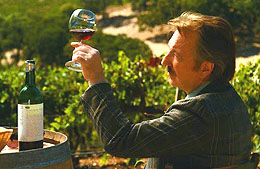 In several earlier posts, we introduced a few home winemaking terms that you may or may not be familiar with. There are many terms to learn in home winemaking, and this post, like all the previous posts, gives you a short introduction to a few of those terms to help you get started in home winemaking, or perhaps brush up on some of the terms you may not have seen in a while.
In several earlier posts, we introduced a few home winemaking terms that you may or may not be familiar with. There are many terms to learn in home winemaking, and this post, like all the previous posts, gives you a short introduction to a few of those terms to help you get started in home winemaking, or perhaps brush up on some of the terms you may not have seen in a while.
- Bottle shock – If you’ve ever seen the movie, starring Bill Pullman and Chris Pine, you might already been familiar with this term. Bottle shock, also known as “bottle sickness”, is the term used for the temporary condition that wines sometimes get immediately after being bottled or being shaken up due to shipping or other general jostling around. A wine experiencing bottle shock will sometimes taste as though its flavors are “muted” or otherwise out of balance. The good thing about the condition of bottle shock is that it doesn’t last that long, so after you’ve bottled your wines, just let them sit for a period of time before opening and enjoying them.
- Casein – Casein is compound that is derived from milk proteins, and that is used as a fining agent in winemaking. Casein is often recommended for use during white winemaking, as it is very effective in reducing any browning caused by oxidation. One problem that can arise with casein is that if you use too much, it can strip the color out of your wine, so be sure to use the recommended amount necessary for your homemade wine.
- Maceration – Maceration refers to the process of the grape skins contacting the must during fermentation. The main purpose of maceration is to extract polyphenols, anthocyanins, and tannins, as well as adding complexity to the aroma, flavor, body, and texture of the finished wine. Maceration is primarily used during the red winemaking process, though some have experimented with using the technique in white winemaking with mixed results.
- Süssreserve – Süssreserve is probably a term you’re less familiar with, though all it refers to is the un-fermented grape juice that is used to sweeten a finished/fermented wine. German in origin, this technique was and still is used today for semi-sweet German Rieslings. According to German law, no more than 15% of the final wine’s volume may be this “sweet reserve” juice. Süssreserve effectively increases the sugar content of the finish wine, while at the same time reduces the alcohol level. Making a sweet wine using süssreserve is different than simply stopping the fermentation process early, as süssreserve results in mostly glucose and fructose sugars, while stopping fermentation early results in mostly just fructose sugars.
— Other Winemaking Terms You Should Know:
Part 4
Part 3
Part 2
Part 1
———————————————————————————————————
Ed Kraus is a 3rd generation home brewer/winemaker and has been an owner of E. C. Kraus since 1999. He has been helping individuals make better wine and beer for over 25 years.

wine making terms sure helps me understand terminology of all the different words thsnks